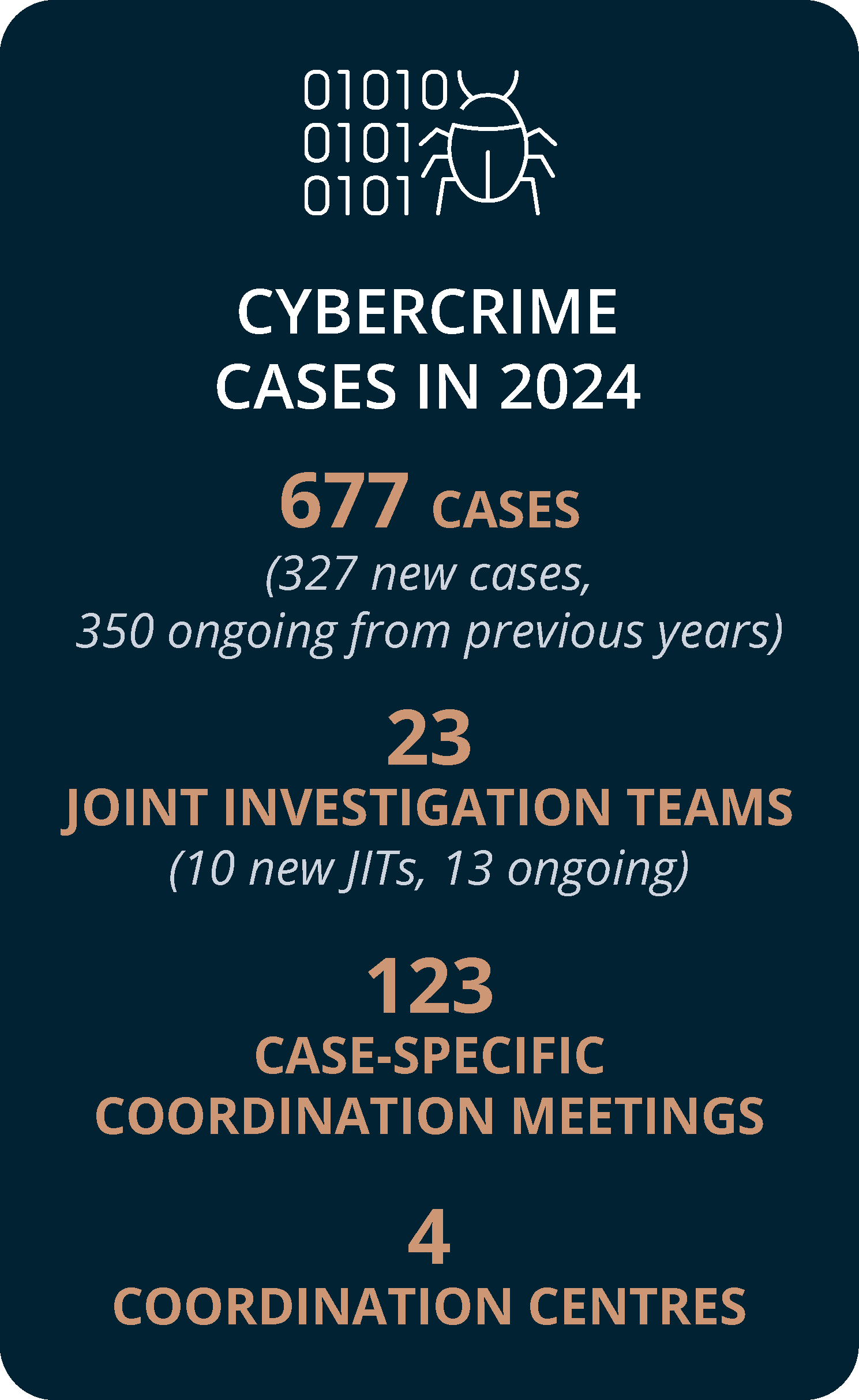Cybercrime continues to grow, attracting criminals who exploit new opportunities offered by modern technology. The main threats are ransomware, malware, social engineering, threats against data, denial-of-service attacks, internet threats, information manipulation and interference, and supply chain attacks.
Cyber-enabled crime, such as online investment fraud, online sexual exploitation of children, and the criminal use of encrypted communication platforms, also continues to pose a significant threat to society.
Eurojust’s operational support to cybercrime cases

In 2024, cybercrime remained one of the top five crime areas handled by the Agency. Eurojust dealt with 25% more cybercrime cases in 2024 compared to the previous year, almost half of which were newly opened. Moreover, the Agency supported 50% more JITs in 2024 (including double the number of newly formed JITs compared to 2023), as well as 55% more coordination meetings related to cybercrime cases.
Spain, followed by the Netherlands, Germany and France, was the country most involved in cross-border cybercrime cases at the Agency in 2024. The United Kingdom, followed by the United States and Switzerland, was the third country most frequently involved in such cases.
Eurojust’s cybercrime casework enabled the disruption and/or takedown of malware, ransomware and encrypted communication platforms, and also included cases of online fraud, including investment fraud.
The Agency continued to provide Member States with crucial assistance in cases involving encrypted communication platforms used by criminals to facilitate all types of crime. This resulted in the decryption of messages on the platforms related to criminal activities such as drug trafficking, firearms trafficking and murder.
A recent example involved the takedown of a sophisticated encrypted messaging service, MATRIX, made by criminals for criminals. During the investigation, the Dutch and French authorities, working together as part of a Eurojust-supported JIT, were able to intercept the messaging service and decipher more than 2.3 million messages in 33 languages.

